Abstract
The enthalpy change (delta H) accompanying the alpha-helix to random coil transition in water has been determined calorimetrically for a 50-residue peptide of defined sequence that contains primarily alanine. The enthalpy of helix formation is one of the basic parameters needed to predict thermal unfolding curves for peptide helices and it provides a starting point for analysis of the peptide hydrogen bond. The experimental uncertainty in delta H reflects the fact that the transition curve is too broad to measure in its entirety, which precludes fitting the baselines directly. A lower limit for delta H of unfolding, 0.9 kcal/mol per residue, is given by assuming that the change in heat capacity (delta Cp) is zero, and allowing the baseline to intersect the transition curve at the lowest measured Cp value. Use of the van't Hoff equation plus least-squares fitting to determine a more probable baseline gives delta H = 1.3 kcal/mol per residue. Earlier studies of poly(L-lysine) and poly(L-glutamate) have given 1.1 kcal/mol per residue. Those investigations, along with our present result, suggest that the side chain has little effect on delta H. The possibility that the peptide hydrogen bond shows a correspondingly large delta H, and the implications for protein stability, are discussed.
Full text
PDF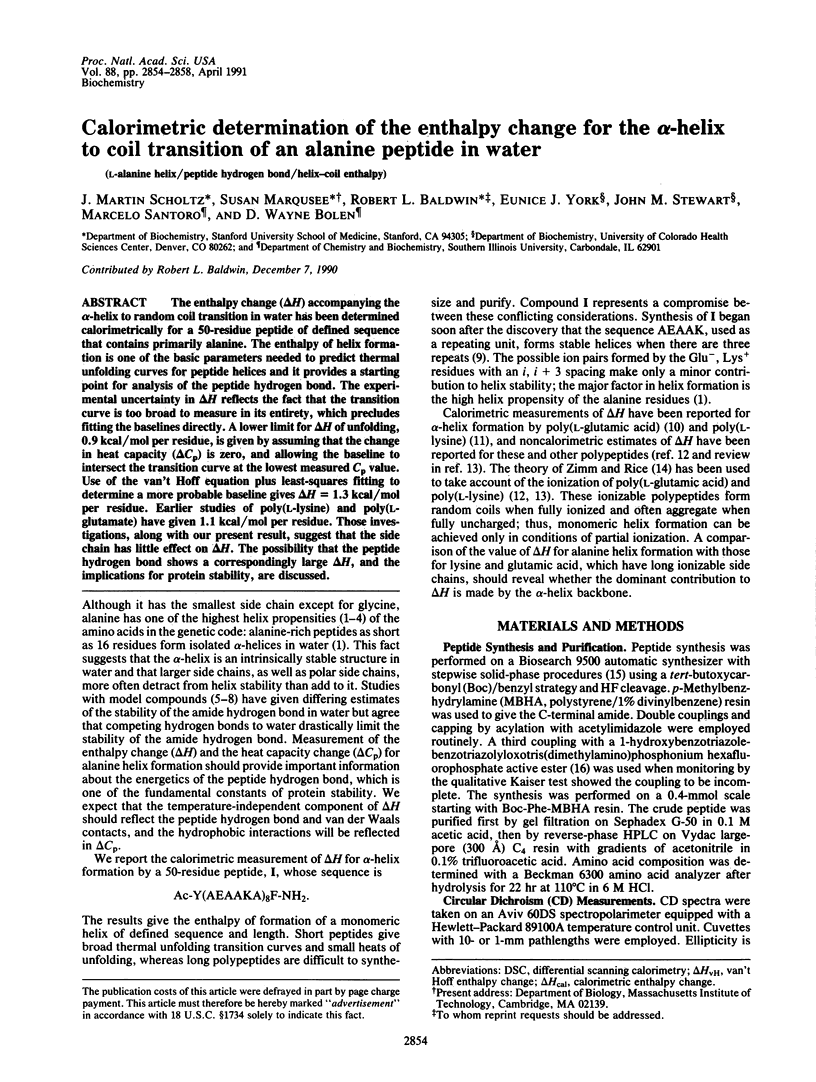
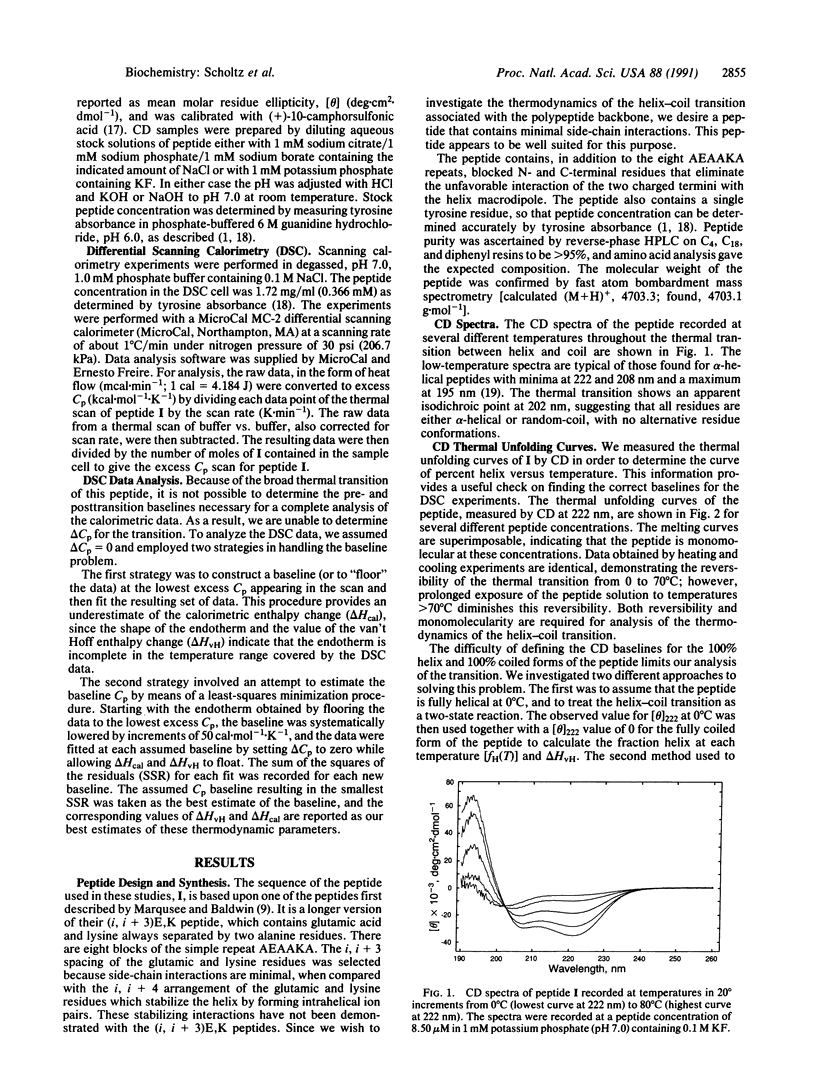
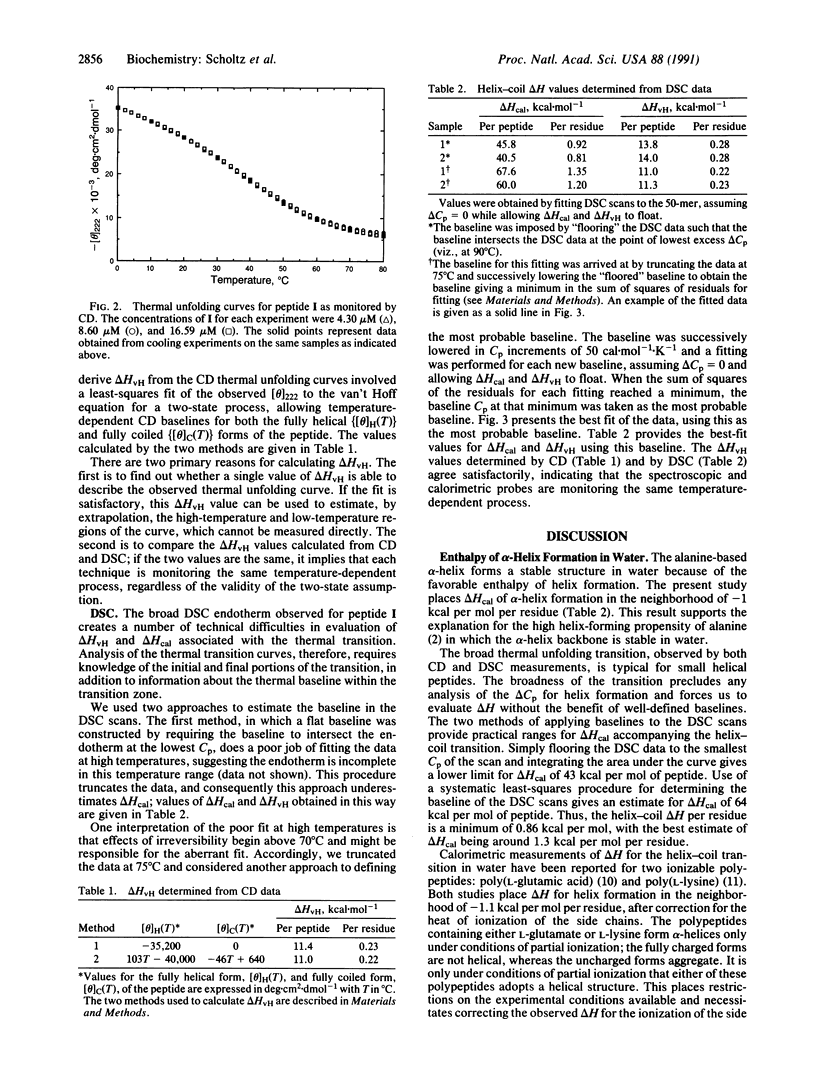
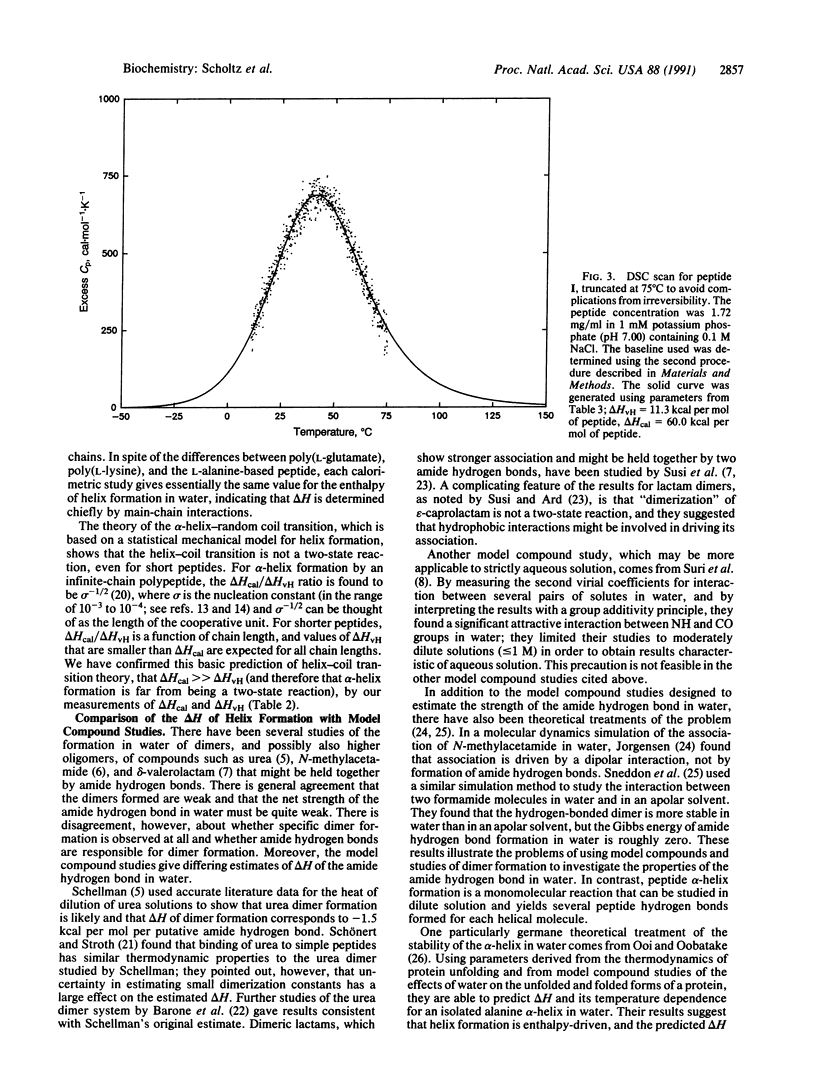
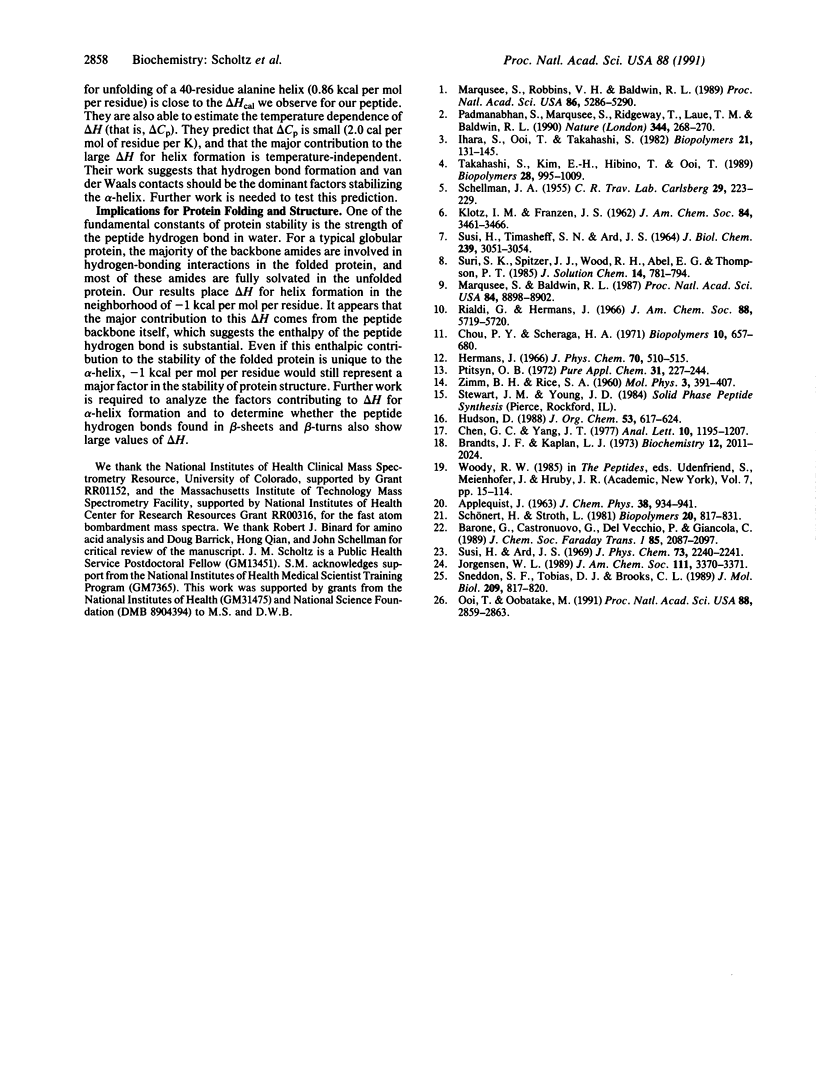
Selected References
These references are in PubMed. This may not be the complete list of references from this article.
- Brandts J. F., Kaplan L. J. Derivative sspectroscopy applied to tyrosyl chromophores. Studies on ribonuclease, lima bean inhibitors, insulin, and pancreatic trypsin inhibitor. Biochemistry. 1973 May 8;12(10):2011–2024. doi: 10.1021/bi00734a027. [DOI] [PubMed] [Google Scholar]
- Chou P. Y., Scheraga H. A. Calorimetric measurement of enthalpy change in the isothermal helix--coil transition of poly-L-lysine in aqueous solution. Biopolymers. 1971;10(4):657–680. doi: 10.1002/bip.360100406. [DOI] [PubMed] [Google Scholar]
- Hermans J., Jr Experimental free energy and enthalpy of formation of the alpha-helix. J Phys Chem. 1966 Feb;70(2):510–515. doi: 10.1021/j100874a031. [DOI] [PubMed] [Google Scholar]
- Marqusee S., Baldwin R. L. Helix stabilization by Glu-...Lys+ salt bridges in short peptides of de novo design. Proc Natl Acad Sci U S A. 1987 Dec;84(24):8898–8902. doi: 10.1073/pnas.84.24.8898. [DOI] [PMC free article] [PubMed] [Google Scholar]
- Marqusee S., Robbins V. H., Baldwin R. L. Unusually stable helix formation in short alanine-based peptides. Proc Natl Acad Sci U S A. 1989 Jul;86(14):5286–5290. doi: 10.1073/pnas.86.14.5286. [DOI] [PMC free article] [PubMed] [Google Scholar]
- Ooi T., Oobatake M. Prediction of the thermodynamics of protein unfolding: the helix-coil transition of poly(L-alanine). Proc Natl Acad Sci U S A. 1991 Apr 1;88(7):2859–2863. doi: 10.1073/pnas.88.7.2859. [DOI] [PMC free article] [PubMed] [Google Scholar]
- Padmanabhan S., Marqusee S., Ridgeway T., Laue T. M., Baldwin R. L. Relative helix-forming tendencies of nonpolar amino acids. Nature. 1990 Mar 15;344(6263):268–270. doi: 10.1038/344268a0. [DOI] [PubMed] [Google Scholar]
- Ptitsyn O. B. Thermodynamic parameters of helix-coil transitions in polypeptide chains. Pure Appl Chem. 1972;31(1):227–244. doi: 10.1351/pac197231010227. [DOI] [PubMed] [Google Scholar]
- Rialdi G., Hermans J., Jr Calorimetric heat of the helix-coil transition of poly-L-glutamic acid. J Am Chem Soc. 1966 Dec 20;88(24):5719–5720. doi: 10.1021/ja00976a007. [DOI] [PubMed] [Google Scholar]
- SCHELLMAN J. A. The thermodynamics of urea solutions and the heat of formation of the peptide hydrogen bond. C R Trav Lab Carlsberg Chim. 1955;29(14-15):223–229. [PubMed] [Google Scholar]
- SUSI H., TIMASHEFF S. N., ARD J. S. NEAR INFRARED INVESTIGATION OF INTERAMIDE HYDROGEN BONDING IN AQUEOUS SOLUTION. J Biol Chem. 1964 Sep;239:3051–3054. [PubMed] [Google Scholar]
- Sneddon S. F., Tobias D. J., Brooks C. L., 3rd Thermodynamics of amide hydrogen bond formation in polar and apolar solvents. J Mol Biol. 1989 Oct 20;209(4):817–820. doi: 10.1016/0022-2836(89)90609-8. [DOI] [PubMed] [Google Scholar]
- Takahashi S., Kim E. H., Hibino T., Ooi T. Comparison of alpha-helix stability in peptides having a negatively or positively charged residue block attached either to the N- or C-terminus of an alpha-helix: the electrostatic contribution and anisotropic stability of the alpha-helix. Biopolymers. 1989 May;28(5):995–1009. doi: 10.1002/bip.360280507. [DOI] [PubMed] [Google Scholar]


